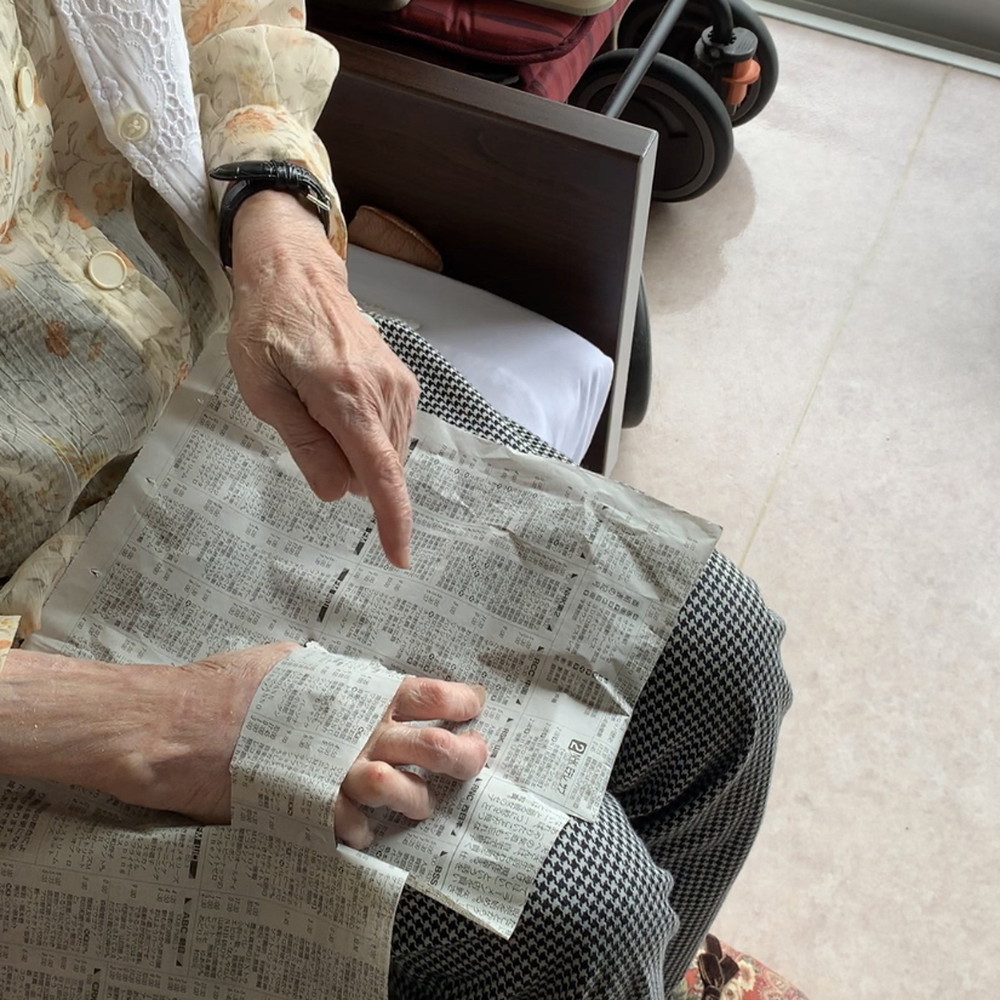Shizuko Abe
An A-bomb Survivor as a Living Testifier
5. Keloid Operations
My parents hoped that I could have an operation as soon as possible. However, on February 17, 1946, the Shidehara administration suddenly enacted a freeze on bank accounts, and we could withdraw only a specified amount of money from the bank. Now, hibakusha can get treatment for free, but in those days, they had to bear the expense, and they could not withdraw enough money for it from the bank. Also at that time, we found that I got pregnant, which boosted my parents desire to have me get an operation as soon as possible. Finally in June, I could be hospitalized and received an operation. I stayed in a Hiroshima army hospital, the present Hiroshima Prefectural Hospital, for about 100 days. I had over ten operations of keloid removal and skin transplant for my face, arms and legs. Those operations were conducted by a Japanese army doctor.
Due to the keloid below the right side of my mouth, the skin shrank and the food in my mouth ran down. At first, I had an operation to remove the keloid. However, even though the keloid was removed, the same part swelled again, and the skin went tight. I had the skin of my jaw grafted on that part. The keloid on my right arm was removed, and the skin around it was pulled and sewn together. After two keloids were removed, they ached so much that I gave up more operations on my arm. My arm swelled red with keloids. Looking at my arm, my neighbors said, “Your arms look like pine trunks.” I was surprised at the operation for the back of my hand. Lines were cut on my stomach, and my right hand was placed under the thin skin and fixed there. One week later, when the skin on my hand was settled, I had an operation to separate my hand from my stomach. I had many operations for my right hand, but still my four fingers are bent backward and I cannot move my thumb. As I had worn dark blue work pants, I got burnt lightly on my right leg compared to other parts. But still, it had severe burns, so I received treatment there, too. As it was immediately after the war, there were not enough medical facilities or medicine. Sometimes the anesthetic wore off during operations. It was impossible to get pain-killer after the operations, so I always struggled against pain in the hospital.


I was told that I would need more operations. But if I repeated the hospitalization, neighbors and mothers in my children’s schools would say, “Hibakusha are so weak that they are often hospitalized, so you should not marry hibakusha.” So, I never had more operations until my children grew up. In 1980, after all my children became independent, I had several transplant operations of my arm and cheeks, which were conducted by Dr. Tomin Harada at Harada Hospital. I could not move my right arm before the operation, but after that, I could walk swinging it. Also, my twisted mouth got much better, which enabled me to eat easily. In total, I had 18 operations, including the ones I received the year after the A-bombing. Dr. Harada was kind and dedicated himself to treating hibakusha all his life.

